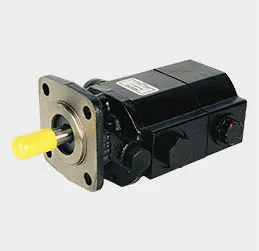Innovative Techniques in PDC Aluminium Casting for Enhanced Performance and Efficiency
PDC Aluminium Casting A Key Player in Modern Manufacturing
In the evolving landscape of manufacturing, PDC (Pressure Die Casting) of aluminium has emerged as a pivotal technique, offering a variety of advantages that make it a preferred choice for many industries. This method stands out due to its efficiency, precision, and versatility, making it particularly suitable for producing high-quality aluminium components.
Understanding PDC Aluminium Casting
Pressure die casting is a manufacturing process in which molten aluminium is injected into a steel die under high pressure. This technique allows for the creation of complex shapes with tight tolerances and smooth surfaces. PDC aluminium casting is notably different from traditional sand casting methods, primarily in its ability to produce parts with greater accuracy and repeatability, which is crucial for modern manufacturing demands.
The process begins with the preparation of the die, which is typically made from hardened steel to withstand the pressures and temperatures involved. Once the die is ready, molten aluminium is injected at high speeds, filling the cavity created by the die. The pressure is maintained until the aluminium solidifies, ensuring that the final product retains its shape and features high dimensional accuracy.
Advantages of PDC Aluminium Casting
1. Enhanced Precision and Surface Finish One of the standout benefits of PDC aluminium casting is the ability to achieve high precision components. The pressure used during casting forces the molten metal into every nook and cranny of the die, resulting in detailed features and a smooth surface finish. This reduces the need for extensive machining and finishing processes, which can be time-consuming and costly.
2. Efficiency and Speed The speed of the PDC process is another key advantage. With cycles often completed in just a few minutes, manufacturers can significantly increase their production rates. This efficiency is particularly beneficial for industries that require large quantities of identical parts, such as automotive, aerospace, and electronics.
pdc aluminium casting

3. Material Utilization PDC aluminium casting offers superior material yield compared to other casting processes. The controlled environment and minimized wastage contribute to a more sustainable approach, allowing manufacturers to utilize aluminium more effectively. Additionally, aluminium is often chosen for its lightweight characteristics, making it ideal for industries pursuing energy-efficient designs.
4. Versatility in Applications The versatility of PDC aluminium casting cannot be overstated. It can be used to produce a wide range of components, from intricate automotive parts to structural components used in buildings. The ability to produce components with complex geometries opens up new possibilities for design and innovation in product development.
5. Cost-Effectiveness While the initial investment in die tooling can be significant, the long-term cost savings associated with PDC aluminium casting are substantial. The combination of reduced post-processing, less material waste, and increased production rates helps to lower the overall cost per part, making it an attractive option for manufacturers.
Challenges and Considerations
Despite its many advantages, PDC aluminium casting is not without its challenges. The initial cost of die production can be high, and any errors in design or production can lead to significant financial losses. Additionally, not all aluminium alloys are suitable for pressure die casting, and careful consideration must be given to material selection based on the intended application.
Moreover, the rapid cooling rates associated with die casting can lead to casting defects such as porosity or incomplete filling. Therefore, it is crucial for manufacturers to have stringent quality control processes in place to mitigate these risks and ensure the production of high-quality components.
Conclusion
PDC aluminium casting represents a vital method in modern manufacturing, characterized by its efficiency, precision, and versatility. As industries continue to seek ways to improve production processes and reduce costs, the adoption of pressure die casting is likely to grow. This technique not only enhances the quality and performance of components but also supports the overall goals of sustainability and innovation in manufacturing. With ongoing advancements in technology and materials, the future of PDC aluminium casting looks promising, paving the way for new applications and opportunities across various sectors.
-
Precision Casting AI Solution with GPT-4-Turbo | Optimized QualityNewsAug.02,2025
-
Precision Sheet Metal Stamping Manufacturer | Fast & ReliableNewsAug.01,2025
-
OEM Sand Cast Pump Valve Fittings - Baoding Hairun Machinery And Equipment Trading Co., Ltd.NewsAug.01,2025
-
Custom OEM Impellers | High Efficiency & PrecisionNewsAug.01,2025
-
OEM Sand Cast Pump Valve Fittings - Baoding Hairun Machinery | Customization, Quality AssuranceNewsAug.01,2025
-
OEM Sand Cast Pump Valve Fittings - Baoding Hairun Machinery And Equipment Trading Co., Ltd.NewsAug.01,2025















